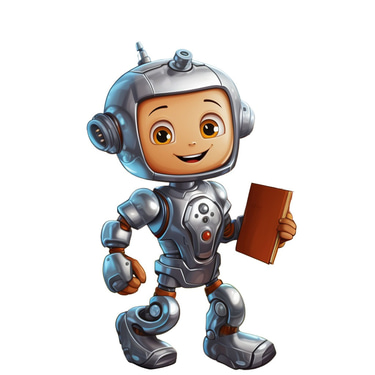Climate Change: How AI Could Help Reverse Global Warming
7/3/20242 min read


Understanding Climate Change
Climate change refers to significant shifts in weather patterns over long periods. To understand it better, think about the climate as the average weather conditions in a place over many years. For instance, if you live in an area where summers are usually hot and winters are cold, that is your local climate. However, when we talk about climate change, we mean that these usual conditions are changing in noticeable ways.
Over the years, scientists have observed that the Earth's climate is becoming warmer. This phenomenon is often called global warming. It affects weather patterns, making some places hotter and others cooler, and can cause more intense storms, droughts, and changes in rainfall. This shift in weather has various impacts on the environment.
One example is how animals and plants are affected. Many animals, like polar bears, rely on cold environments to survive. As the climate warms, ice in places like the Arctic melts, shrinking the habitat for these animals. Similarly, plants that need specific weather conditions may struggle to grow and survive, affecting the entire ecosystem.
Humans play a significant role in speeding up climate change through activities like burning fossil fuels (such as coal, oil, and natural gas) and deforestation. When we burn fossil fuels, we release carbon dioxide and other greenhouse gases into the atmosphere. These gases trap heat from the sun, causing the Earth to warm up. Additionally, cutting down trees reduces the number of plants that can absorb carbon dioxide, further increasing the concentration of greenhouse gases.
Understanding these basic concepts helps us recognize why climate change is a critical issue. It affects not just the weather but also the plants and animals that share our planet. By learning more about it, we can better understand how to take action and protect our environment.
How AI Can Help Fight Climate Change
Artificial intelligence (AI) is emerging as a powerful tool in the fight against climate change, offering innovative solutions that can make a significant positive impact on our environment. One key application is AI-powered climate models. These sophisticated models analyze vast amounts of data to predict future weather patterns and climate shifts. By understanding potential changes, scientists and policymakers can develop strategies to mitigate the adverse effects of global warming.
Another notable use of AI is in the optimization of energy consumption through smart grids. Smart grids employ AI to manage the distribution of electricity more efficiently, reducing waste and maximizing the use of renewable energy sources like solar and wind power. By adjusting energy distribution in real-time based on demand and supply, smart grids help decrease overall carbon emissions.
AI is also instrumental in monitoring deforestation and promoting wildlife conservation. Advanced AI systems can analyze satellite images to detect illegal logging activities and changes in forest cover, allowing for quicker intervention and preservation of vital ecosystems. Additionally, AI-driven tools can track animal populations and their habitats, helping conservationists develop targeted strategies to protect endangered species.
These AI applications not only illustrate the potential of technology to address climate change but also serve as inspiration for young minds to think creatively about how they can contribute to environmental sustainability. By fostering an interest in technology and environmental science, we encourage the next generation to develop innovative solutions for our planet's challenges.
Moreover, kids can take simple actions in their daily lives to combat climate change. This includes using energy-efficient appliances, recycling, reducing waste, and spreading awareness about the importance of environmental conservation. By combining individual efforts with advanced AI technologies, we can work together to create a greener, more sustainable future.
